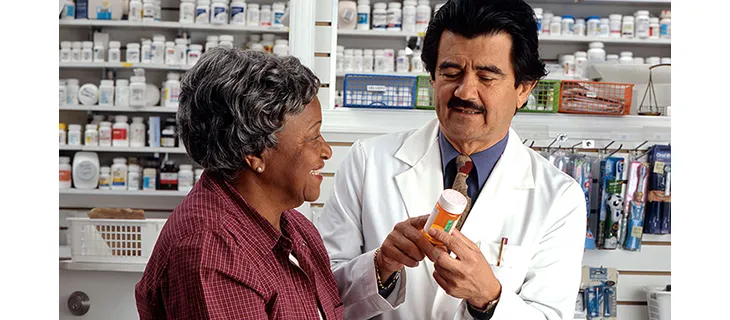COSTA MESA, Calif. — Despite the looming threat of disruption at the hands of e-commerce, the U.S. pharmacy industry continues to enjoy superior levels of customer satisfaction in both the brick-and-mortar and mail order segments, according to the J.D. Power 2019 U.S. Pharmacy Study, released Tuesday.
Study Rankings
Good Neighbor Pharmacy ranks highest overall among brick-and-mortar chain drug store pharmacies, with a score of 914. Health Mart (893) ranks second and Rite Aid Pharmacy ranks third (865).
Sam’s Club ranks highest overall among brick-and-mortar mass merchandiser pharmacies, with a score of 890. Costco (879) ranks second and CVS/pharmacy inside Target (869) ranks third.
Wegmans ranks highest overall among brick-and-mortar supermarket pharmacies, with a score of 915. Publix (897) ranks second and Winn-Dixie ranks third (896).
Humana Pharmacy ranks highest overall in mail order with a score of 900. Kaiser Permanente Pharmacy (886) ranks second and OptumRx (869) ranks third.
The U.S. Pharmacy Study, now in its 11th year, measures customer satisfaction with brick-and-mortar and mail order pharmacies. The 2019 study is based on responses from 12,059 pharmacy customers who filled a prescription during the three months prior to the survey period of May-June 2019.

J.D. Power 2019 U.S. Pharmacy Study
“As technology companies promise to change the way Americans address their pharmacy needs, our data suggests that changing such entrenched behavior will be an uphill battle,” said Greg Truex, managing director of health intelligence at J.D. Power. “Customers enjoy visiting their brick-and-mortar pharmacy and they get a great deal of satisfaction from speaking directly with pharmacists. However, the potential for technology disruption is there. Although, the frequency of use of digital solutions is low, early adopters are showing high levels of satisfaction.”
Following are some of the key findings of the 2019 study:
- Face-to-face interaction still most prevalent: Most pharmacy customers that communicate with the pharmacist and staff do so in-person (89%), even though customers that use email or online live chat to interact with the pharmacist or staff are equally or more satisfied.
- Thorough pharmacist discussions yield higher customer satisfaction: Satisfaction with the pharmacist is above 940 (on a 1,000-point scale) when pharmacists cover four or more topics with the customer during their interaction, compared with just one (884) or two (917) topics.
- Health and wellness customers spend more at the pharmacy: About two-fifths (42%) of customers who are aware of their pharmacy’s health and wellness services have used one of the services in the past year. While those who have taken advantage of health and wellness services spent 12.5% more on their most recent prescription order, significantly less health and wellness customers received a prescription as a result of their participation in 2019 as compared with 2018.
- Mobile app users more satisfied, but usage is stagnant: Only 20% of customers use a pharmacy’s mobile app, but those who did have satisfaction scores as much as 23 points higher than those who do not.
For more information about the U.S. Pharmacy Study, visit
https://www.jdpower.com/business/resource/us-pharmacy-study.









